In my coin dealing business, customers like to sell me stuff. Couple years ago a guy drove up with a rented U-Haul fully packed with coins he said he’d been collecting since 1949.
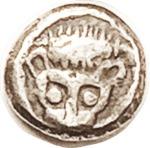
More recently another longtime customer sold me his ancient Greek coins. Turned out he’d specialized in the tiniest ones (like 3 to 8 millimeters). I gave him a price he was happy with. Had to work up a new technique to photograph such micro coins for my auctions.
Then he asked if I’d be interested in his Byzantine coins.* Love them, said I.**
I vividly remember, over 50 years ago, standing in a little shop, chatting with its owner over a tray of coins he’d bought. “That’s Byzantine,” I said, pointing to one. “In the usual miserable condition.”
Those words afterward reverberated with me. I actually knew nothing about Byzantine coins, except that they did tend to look pretty crappy. Now I wondered if it was possible to find and collect non-crappy ones. (For me quality is the name of the game in numismatics.) Soon enough a mail auction presented an opportunity, and so my Byzantine collection was launched.
The Byzantine Empire began as the Eastern part of the Roman one. After the West fell in 476 AD, the Byzantines flourished for further centuries, followed by a long decline, until 1453, when the Turks conquered their capital, Constantinople (today’s Istanbul).
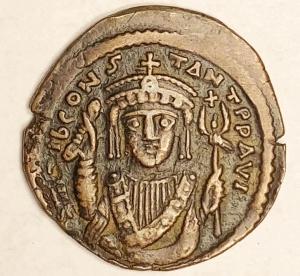
Byzantine gold coins are actually very common and usually very nice. It’s the bronzes that are problematic, having been “workhorses” of commerce, suffering much abuse — and were poorly made to begin with. Those are what I’ve collected. It’s a highly interesting series, very varied, with many different types produced at numerous mints. The later ones tend to be scarcer, and even more quality-challenged.
But one can accomplish a lot in five decades, and I now have a pretty comprehensive collection, over 700 different coins (no duplicates), the quality ranging from decent to very nice. The difficult later series is particularly well represented since decades ago I bought the collection of a man who specialized in those (because his name, Laskaris, was that of one of the relevant dynasties). At this point, improving my collection grows harder, but I have by no means exhausted the field.
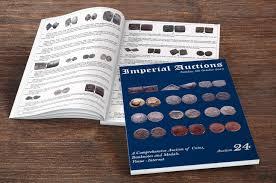
And what, really, is the purpose being served? A question I often ponder. It’s an ephemeral thing (I haven’t really thought about the collection’s ultimate disposition).*** Much human endeavor is geared toward raising esteem in others’ eyes. But it’s unlikely anyone able to appreciate this collection will ever see it in its fullness; and when I see great collections in auction catalogs, it does nothing for those collectors. But my pride in this achievement is personal to me, it pleases me; and I’m the most important person on Earth (to me).
Anyhow — my customer, who seemed a pretty sophisticated collector, sent me his 85 Byzantine coins, and I was keenly looking forward to this, hoping to add some goodies to my own holdings.
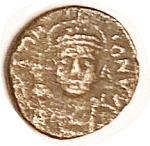
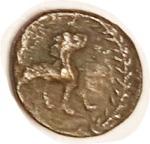
There were indeed some scarce and nice ones I didn’t have. One a nummus (my spell checker wants to make this “hummus”), the smallest value in the whole Byzantine repertoire, and rarely produced. This particular type, unusually with a facing bust of Justinian I (527-65 AD) and a lion on the reverse, I’d never even seen before, and it’s in quite good condition.
Another was minted at Rome, while re-occupied by the Byzantines, who made rather few coins there. Wretched productions at that. This one again is much above average.
As I worked my way through the chronologically arranged box, I said to myself, “this is the kind of collection that just might have a 1693.” A catalog number in Sear’s definitive book, Byzantine Coins and Their Values. A Follis of Michael III (“the Drunkard”) and Basil I from their brief joint reign, 866-67 AD (the depths of the “Dark Ages”), with their facing busts on each side. A distinctive and rare major type that really should be in my collection, but I’d never managed to get one — and it had started to bug me. Like it had become a holy grail. Recently I’d put in what I thought was a strong bid in an obscure online auction, but lost out.
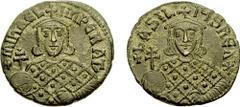
So as that number approached, I crossed my fingers. And Bingo! There it was, 1693! And a nice one. Very nice.
I recalled the line from Jabberwocky: O Frabjous Day! Callooh! Callay! He chortled in his joy. Because I was literally chortling with delight to see that coin.
And in fact it’s more than just nice. One of the best 1693’s in existence. I checked acsearch.info, an extensive online database of past numismatic auctions (I consult it constantly), and found my coin’s 2005 sale record. There were 43 others — none as good.

O Frabjous Day! Callooh! Callay!
* He mentioned he was inspired to collect them after reading a book on the period by Kenneth Harl — who also buys coins from me.
** I’ve previously written about one in my collection: https://rationaloptimist.wordpress.com/2021/11/22/baltimore-coin-show-fun/
*** Not wishing to burden my wife and daughter, I have been selling collections, notably my Chinese and British. Do I miss them? Yes. But I look fondly back on the fun of collecting them.
